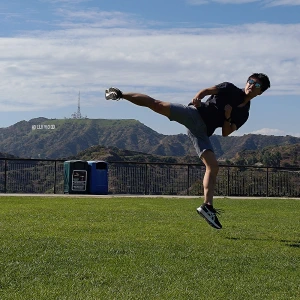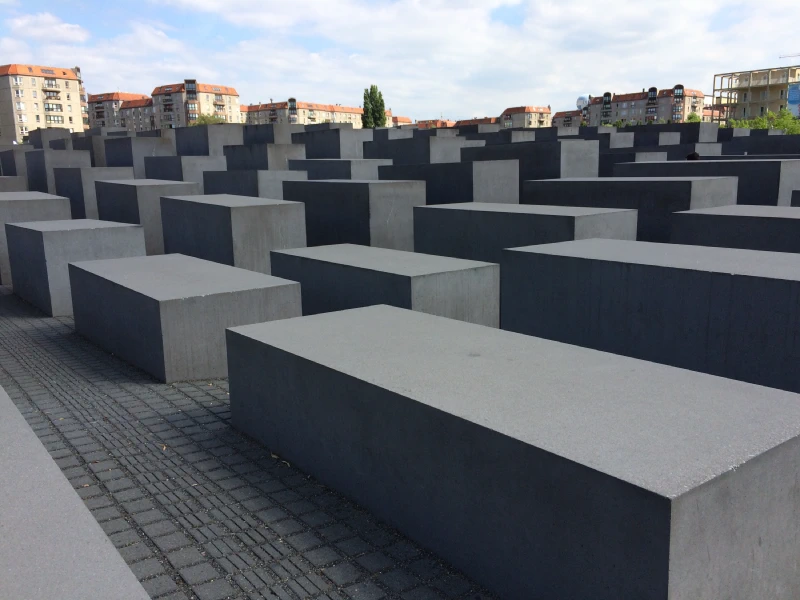Posted
on
in
Baltic Cruise and Northern Europe
• 1115 words
• 6 minute read
Tags:
Berlin, Germany
Today we docked at the port in Warnemunde, Germany. We had to go out earlier than normal because 1) we docked earlier and 2) we drove into Berlin which is a 3.5 hr drive. We didn’t have much trouble finding our driver, and the ride into Berlin wasn’t very interesting. We stayed mostly on the autobahn, the (basically) no speed limit highways. The driver didn’t seem to be very experienced, but we didn’t die. He did drive us to the wrong spot in Berlin though. It was his second time in Berlin, so he didn’t know the city very well. Our guide had told the driving company to take us to a certain part of the Berlin Wall, but the company had told our driver the wrong place. It took half an hour or so to find the right spot.
We met our guide and walked along a preserved portion of the Berlin Wall. She explained some of the history of the wall as we went. After the victory over the European Axis powers, the United States, France, Great Britain and the Soviet Union divided up Germany to oversee the democratization, de-Nazification, and de-militarization of Germany. Berlin, the capitol of Germany, was situated in the middle of the Soviet sector, but because of its significance, it too was divided up in the same way as the rest of the country with sectors given to the UK, France, the US and the USSR. For many years, the only way for people to get from East Germany (under the control of the Deuchland Democratic Republic) to the West was through Berlin. In fact, one sixth of the East German population did this. The running joke was, go to the border, throw away your passport, and walk across the street and they will welcome you and give you a new life. This migration is known as “the brain drain” because most of the people that left were the educated people (not the proletariat that Communism upholds).
Then in 1961, the East German government built a wall overnight, barricading West Berlin from the outside world (remember, Berlin was surrounded by East German territory). Our guide showed us a picture of mothers holding babies up over the wall for fathers to see. She explained that the many women went to hospitals in the West because they received better care, but the father went home to the East after visiting hours. When they woke up the next morning, they were unable to go across to each other.
Another interesting thing about the wall was that it was built about 4 feet into East German territory which meant that West Germans could come 4 feet into East German territory. The West German police, however, did not have jurisdiction in that 4 feet between the border and the wall because it was technically East Germany. Because of this, many illegal activities occurred in this little strip.
After viewing this section of the wall, we went to another location in Berlin, got out, and walked around for a few hours. The first thing we did was get lunch. I got a bratwurst with fries, but unfortunately there was a miscommunication and I got it cut up into pieces instead of in a bun.
We proceeded through the streets to some of the squares in the city. I’ll tell you some of the highlights here.
There was a square which had a Catholic cathedral at one corner. Interestingly, this cathedral was built by the Protestant (I think Lutheran) king at the time. Out guide pointed this out as a very progressive, tolerant gesture in an age where nations were going to war over religion.
In another square there was a Lutheran cathedral that looks very similar to the Catholic cathedral. The story was that the French Catholics came to the king and asked to build a church in the square. He agreed so long as they would pay to build it and construct it to his specifications. Later, the Lutherans came and asked to build a church on the same square. The king agreed as long as they would pay to build it and construct it like the other cathedral. The Lutherans build their cathedral a few centimetres higher.
German Chancellor Angela Merkel’s apartment is just across the street from one of the biggest museums in Berlin, the one that holds parts of the Ishtar Gates. Our guide said that when the lines are the longest at the museum in the morning, the Chancellor will casually drive up to the apartment, get out of her car and walk in. She does not have any security around the building because she does not fear any attacks.
Any building in Berlin that does not have bullet hole damage was either not built before WWII or restored after WWII. When the Soviet military came to Berlin, the Nazis fortified every part of the city. Streets were blocked with cars, children of the Nazi Youth as young as 13 and pensioners who hadn’t ever held a gun were mobilized. The Nazi Youth have much in common with ISIS youth: indoctrinated hate, destruction, and death. These youth’s creativity forced the Soviets to make a full out attack on the city. Every street and building had to be taken individually. Stalin, the Soviet dictator at the time, bragged that he had used more artillery in the attack on Berlin than all the other allies combined during the entire rest of the war.
When the Nazis took over Germany in 1933, a demonstration was held and thousands of books were burned. Today, in the square where those books were burned is a memorial under the ground with empty shelves big enough to hold the books that were burned.
We were able to go see the Brandenburg Gate where Regan made his famous “tear down this wall” speech. Like many sites, it wasn’t particularly spectacular in and of itself. However, because of its historical significance as a symbol of the East-West/Communist-Capitalist divide during the Cold War, it was really cool to see.
Towards the end of our tour we went to the Memorial to the Murdered Jews of Europe. When I was inside the memorial, the scale of the monument made the extent of the horror that was the Holocaust.
We rode past the various embassies, the German Parliament, and the German President’s house (the German President doesn’t have any political power, but, like the Queen of England, is the international face of Germany).
After our tour, we rode back 3.5 hr back to Warnemunde. The evening was much the same as the last few evenings.

